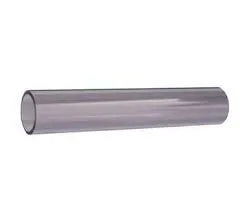ഒക്ട് . 21, 2024 12:43 Back to list
Exploring the Benefits and Applications of PP Sandwich Sheets in Modern Industries
The Evolution and Benefits of PP Sandwich Sheets in Modern Applications
In the ever-evolving landscape of materials technology, polypropylene (PP) sandwich sheets have emerged as a revolutionary solution for a multitude of applications. From construction and automotive industries to the manufacturing of furniture and packaging, these innovative sheets are making waves due to their lightweight, durable, and versatile characteristics. Understanding the composition, advantages, and varied uses of PP sandwich sheets can highlight their growing significance in contemporary manufacturing and design.
At its core, a PP sandwich sheet consists of a core made of polypropylene foam, sandwiched between two layers of solid polypropylene. This unique structure results in a sheet that is not only lightweight but also exhibits remarkable strength and rigidity. The foam core allows for excellent thermal insulation and soundproofing capabilities, making it an ideal choice for applications where temperature control and noise reduction are critical.
The Evolution and Benefits of PP Sandwich Sheets in Modern Applications
Additionally, the ease of processing PP sandwich sheets plays a crucial role in their widespread adoption. These sheets can be easily cut, shaped, and molded using standard tools and machinery, enabling manufacturers to create custom designs without extensive retooling. This flexibility is particularly beneficial in industries such as furniture design, where unique shapes and sizes are often required to meet consumer demands.
pp sandwich sheet

In the construction industry, PP sandwich sheets are increasingly being used as panels for walls and ceilings due to their excellent thermal insulation properties. They contribute to energy efficiency in buildings, reducing heating and cooling costs for occupants. Furthermore, their lightweight nature simplifies transportation and installation, leading to faster project completion times. This makes PP sandwich sheets not only economically viable but also environmentally friendly, as they can contribute to sustainable building practices.
The automotive industry has also recognized the benefits of PP sandwich sheets. These materials are utilized in various components, including interior panels, door skins, and trunk liners. The combination of lightweight and high strength helps improve fuel efficiency by reducing the overall weight of vehicles. Moreover, their impact resistance provides added safety for passengers, a critical consideration for manufacturers.
In the realm of furniture manufacturing, PP sandwich sheets are gaining popularity for creating lightweight yet sturdy furniture pieces. Designers appreciate the aesthetic versatility and the ability to produce sleek, modern designs without compromising on functionality or durability. The use of these sheets allows for innovative concepts in office furniture, outdoor settings, and more, catering to the ever-changing tastes of consumers.
Moreover, in packaging applications, PP sandwich sheets offer a strong and lightweight alternative to traditional materials. They provide enhanced protection for products while reducing shipping costs due to their low weight. Their resistance to moisture and chemicals ensures that the contents remain safe during storage and transportation.
In conclusion, the emergence of PP sandwich sheets marks a significant advancement in materials technology, offering unparalleled benefits across various industries. Their lightweight, durable, and versatile nature opens up a world of possibilities in construction, automotive, furniture design, and packaging. As manufacturers continue to explore innovative solutions that prioritize efficiency, sustainability, and cost-effectiveness, it is clear that PP sandwich sheets have positioned themselves as a key player in the future of modern manufacturing processes. With ongoing research and development, we can expect to see even more applications and enhancements in this dynamic material category, further solidifying its role in shaping the materials of tomorrow.
-
PVC Transparent Sheet Roll - Durable & Flexible PVC Plastic Sheet Roll for Industrial & Home Use
NewsJun.24,2025
-
High-Quality PVC PPR Pipes and Fittings Durable ERA PPR Solutions
NewsJun.10,2025
-
High-Quality Large HDPE Sheets & Large Diameter PVC Pipe Durable Large PVC Pipe Supplier
NewsJun.10,2025
-
High Density Polyethylene Cutting Board - Durable & Food Safe
NewsJun.09,2025
-
3 Inch PVC Pipe for Durable Irrigation Affordable & Reliable
NewsJun.09,2025
-
Premium PPR Plastic Water Pipe Fittings - Durable & Leak-Free
NewsJun.09,2025

